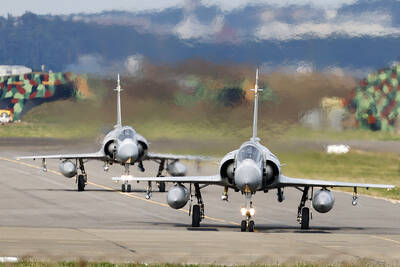In the debate over high-technology work migrating abroad, there has been widespread agreement on at least one thing: The jobs requiring higher levels of skill are the least at risk.
Routine software programming and testing jobs, analysts agree, are the ones most susceptible to being grabbed by fast-growing Indian outsourcing companies. By contrast, the people who devise the early blueprints for projects -- the software architects -- have been regarded as far less likely to see their jobs farmed out.
But Microsoft contract documents show that as far back as 2001 the big software maker had agreed to pay two Indian outsourcing companies, Infosys and Satyam, to provide skilled "software architects" for Microsoft projects. The documents were obtained earlier this month by WashTech, an organization of technology workers based in Seattle, which gave copies to The New York Times.
"The policy prescription you hear from people again and again as the response to the global competition of outsourcing is for Americans to move to high-end work," said Ronil Hira, an assistant professor for public policy at the Rochester Institute of Technology.
"It's important to dispel the myth that high-end work is immune to offshore outsourcing," he said.
"What is not clear," Hira added, "is how much of that high-end work will go abroad."
A Microsoft spokeswoman, Stacy Drake, said that as a matter of policy the company did not comment on individual contracts with suppliers. But, she said, "We often use outside companies for projects."
The outside contractors, Drake said, are used to bring in specialized expertise Microsoft may not have in-house or to bring additional technical support onto a project.
Still, Drake said, building the "core intellectual property" in Microsoft products is left to full-time company employees.
Though definitions vary, software architects are highly skilled workers who often earn six-figure salaries in the US. The Microsoft contracts with Infosys and Satyam show that the work of software architects, senior software developers and software developers was being done by employees of the Indian companies working at Microsoft facilities in the US.
Their work did not come cheap for Microsoft, which was billed US$90 a hour for software architects, or at a yearly rate of more than US$180,000. Senior software developers were billed at US$72 an hour and software developers US$60 an hour.
The on-site work, said Hira, an expert on offshore outsourcing, is usually done by Indian software engineers who come to the US on H-1B visas, which allow foreign workers to be employed in the US for up to six years.
The Indian workers themselves are paid a fraction of what their employers collect. The top annual salaries paid by Indian outsourcing companies to Indian software experts working in the US are US$40,000 or so, Hira said.
The contracts also say that for short stints of work, less than 90 days, Microsoft will pay for round-trip economy airfare for travel between India and the US.
The contracts also include work done in India, by project managers and by software development and testing engineers. The billing rate for this work ranges from US$36 an hour to US$23 an hour.
A spokeswoman for Infosys said the company did not comment on its contracts, and a Satyam spokesman could not be reached.
Critics of the outsourcing trend regard such agreements with Indian contractors, with work done both in the US and in India, as a step toward shifting more and more skilled technology jobs overseas.
"Microsoft has hired vendors whose whole reason for being is to transfer work offshore," said Marcus Courtney, president of WashTech, an affiliate of the Communications Workers of America.
The foreign competition for work at Microsoft, Courtney said, will help the company's management put more pressure on wages for its American workers and reduce employee benefits. Last month, Microsoft announced that it planned to cut costs by an estimated US$80 million a year by trimming prescription-drug benefits, tightening parental-leave policies and making it more expensive to buy Microsoft shares through the employee stock purchase plan.
Despite its use of foreign contract workers, Microsoft expects to add 3,000 to 3,500 full-time employees to its US payroll of 37,000 in the fiscal year that ends next month.

Taiwan is gearing up to celebrate the New Year at events across the country, headlined by the annual countdown and Taipei 101 fireworks display at midnight. Many of the events are to be livesteamed online. See below for lineups and links: Taipei Taipei’s New Year’s Party 2026 is to begin at 7pm and run until 1am, with the theme “Sailing to the Future.” South Korean girl group KARA is headlining the concert at Taipei City Hall Plaza, with additional performances by Amber An (安心亞), Nick Chou (周湯豪), hip-hop trio Nine One One (玖壹壹), Bii (畢書盡), girl group Genblue (幻藍小熊) and more. The festivities are to

Auckland rang in 2026 with a downtown fireworks display launched from New Zealand’s tallest structure, Sky Tower, making it the first major city to greet the new year at a celebration dampened by rain, while crowds in Taipei braved the elements to watch Taipei 101’s display. South Pacific countries are the first to bid farewell to 2025. Clocks struck midnight in Auckland, with a population of 1.7 million, 18 hours before the famous ball was to drop in New York’s Times Square. The five-minute display involved 3,500 fireworks launched from the 240m Sky Tower. Smaller community events were canceled across New Zealand’s

‘IRRESPONSIBLE’: Beijing’s constant disruption of the ‘status quo’ in the Taiwan Strait has damaged peace, stability and security in the Indo-Pacific region, MOFA said The Presidential Office yesterday condemned China’s launch of another military drill around Taiwan, saying such actions are a “unilateral provocation” that destabilizes regional peace and stability. China should immediately stop the irresponsible and provocative actions, Presidential Office spokeswoman Karen Kuo (郭雅慧) said, after the Chinese People’s Liberation Army (PLA) yesterday announced the start of a new round of joint exercises around Taiwan by the army, navy and air force, which it said were approaching “from different directions.” Code-named “Justice Mission 2025,” the exercises would be conducted in the Taiwan Strait and in areas north, southwest, southeast and east of Taiwan

UNDER WAY: The contract for advanced sensor systems would be fulfilled in Florida, and is expected to be completed by June 2031, the Pentagon said Lockheed Martin has been given a contract involving foreign military sales to Taiwan to meet what Washington calls “an urgent operational need” of Taiwan’s air force, the Pentagon said on Wednesday. The contract has a ceiling value of US$328.5 million, with US$157.3 million in foreign military sales funds obligated at the time of award, the Pentagon said in a statement. “This contract provides for the procurement and delivery of 55 Infrared Search and Track Legion Enhanced Sensor Pods, processors, pod containers and processor containers required to meet the urgent operational need of the Taiwan air force,” it said. The contract’s work would be